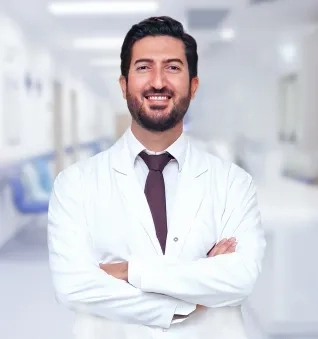Alo Yeditepe
Alo Yeditepe
Untreated Genital Problems Can Cause Urinary Incontinence
Providing information about non-surgical genital aesthetics and tightening practices, Gynecology and Obstetrics Specialist Dr. Mert Yeşiladalı stressed the importance of genital treatments: “The strength of the connective tissues supporting the genital area decreases with age, and loosening occurs in this area. Therefore, both there is looseness in the vagina, and it can lead to bigger problems such as urinary incontinence. We see these disorders in about 50 percent of women.”
Yeditepe University Kozyatağı Hospital Obstetrics and Gynecology Specialist Dr. Mert Yeşiladalı gave information about non-surgical genital aesthetic applications. Noting that vaginal sagging and dilation are important problems for women, Dr. Yeşiladalı stressed that this causes urinary incontinence and might significantly reduce a woman's quality of life if left untreated. In this regard, he explained that non-surgical genital tightening applications, the use of which had increased significantly in recent years, could be a solution for many women.
"As Age Progresses, the Connective Tissue Strength Weakens”
Stating that many different methods are used in genital aesthetic applications, Dr. Yeşiladalı said, “The practices we call genital aesthetics are methods that have different treatments from external genital area aesthetics to inner vagina aesthetics. In fact, the treatments for tightening the genital area are treatments that are functionally necessary in some cases, rather than being aesthetic. Because there are muscle and connective tissues that support the genital area and bladder in the pelvis area, which we call the pelvic floor. The strength of these connective tissues decreases as the age progresses, as in the whole body. A loosening occurs in this area. Therefore, it can cause looseness in the vagina and cause bigger problems such as urinary incontinence. These treatments simultaneously tighten the vagina and increase the vaginal pressure, and can offer a non-surgical solution to the problem of urinary incontinence by strengthening the connective tissues in the pelvic region.
"Patients Shy Away From Getting Help”
Stating that as age progresses, a loosening occurs in the connective tissues of the whole body, Dr. Yeşiladalı said, “Just as sagging occurs on our face, arms and legs, sagging occurs in the genital area in the same way. Especially in women who have had a vaginal delivery, the complaint of vaginal looseness can begin at a much earlier age. In women who have not given birth normally, especially after menopause, weakening of the connective tissues in this region can be seen with the decrease in the estrogen hormone. In fact, it is a very common problem in society. Especially in older women, we see complaints such as both laxity and urinary incontinence at a rate of almost 50 percent. However, applications to us is not at this rate. Patients tend to avoid revealing these problems and getting help.”
"Connective Tissue Can Be Tightened Without Surgery”
Noting that non-surgical connective tissue tightening procedures have been used in cosmetic surgery for a long time, and nowadays these procedures are performed with different technologies, Dr. Yeşiladalı continued his words as follows:
“There are technologies that use laser, radiofrequency or ultrasound energy, namely HIFU (Focused ultrasound energy). We use HIFU technology. By applying focused ultrasound energy to the connective tissue under the vaginal mucosa between 3 millimeters and 4.5 millimeters, thermal damage is created in this region up to a certain temperature. It triggers the production of collagen and elastin tissues in this area. In fact, we somehow activate the body’s natural repair mechanism.”
There is No Age Restriction in the Treatment
Underlining that there are no age restrictions for treatment, Dr. Mert Yeşiladalı said, "It is a method that can be applied to women in every age group. In addition to tightening, this technology can also be used in the treatment of drug-resistant relapsing vaginal infections, urinary incontinence, vaginal thinning, and dryness after menopause, and whitening of the genital area.” Yeditepe University Hospitals Obstetrics and Gynecology Specialist Dr. Yeşiladalı gave the following information about the application:
“After the patient has applied to us, we first make a general assessment and see if the case can be treated without surgical application. If the patient is eligible for treatment, we perform a procedure that takes about 20-30 minutes in a single session and under outpatient clinic conditions. The procedure is painless and does not require anesthesia. Although we usually see the desired effect in a single session, we may also need a second session for some patients. 3-4 weeks after performing the first session, the patient also begins to notice the change.”
Press Coverage: mynet | gazetevatan | haberler | cnnturk | turkuazgazetesi | gunes
About
Faculty and Year of Graduation:
Hacettepe University Faculty of Medicine, 2009
”
See Also
- Contraceptive Methods: Birth Control and Effective Protection Options
- Uterine Polyps, Symptoms and Treatment
- What is Pelvic Floor? What are Their Duties?
- What is Hysteroscopy? Hysteroscopy Usage Areas
- What is Myoma? Myoma Symptoms and Treatment
- What is Laparoscopic Surgery in Gynecology?
- Causes of Female Infertility
- The Use of Non-Inpatient Closed Surgery is Increasing in Gynecological Diseases
- Chronic Pelvic Pain
- What is Polycystic Ovary Syndrome/PCOS?
- Postpartum Period
- Imaging Methods During Pregnancy
- Causes of Male Factor Infertility
- The Effect of Advanced Age on IVF Treatment
- Infertility
- Polycystic Ovary Syndrome
- Early Menopause
- Blocked Fallopian Tube
- Vaginismus
- Low Ovarian Reserve (AMH)
- Which Methods Increase Success in Treatment of Infertility?
- Intrauterine insemination (IUI)
- Microinjection
- Egg Cryopreservation
- Assisted Hatching
- Micro-chip
- Pre-implantation Genetic Diagnosis
- 10 Overlooked Signs of Menopause
- Endometriosis
- Co-Culture
- Ovarian Rejuvenation / PRP
- Getting Cancer Treatment Does Not Stop You from Having Children!
- Considerations for Embryo Transfer
- What Causes Menstrual Irregularity, How Is It Treated?
Alo Yeditepe






